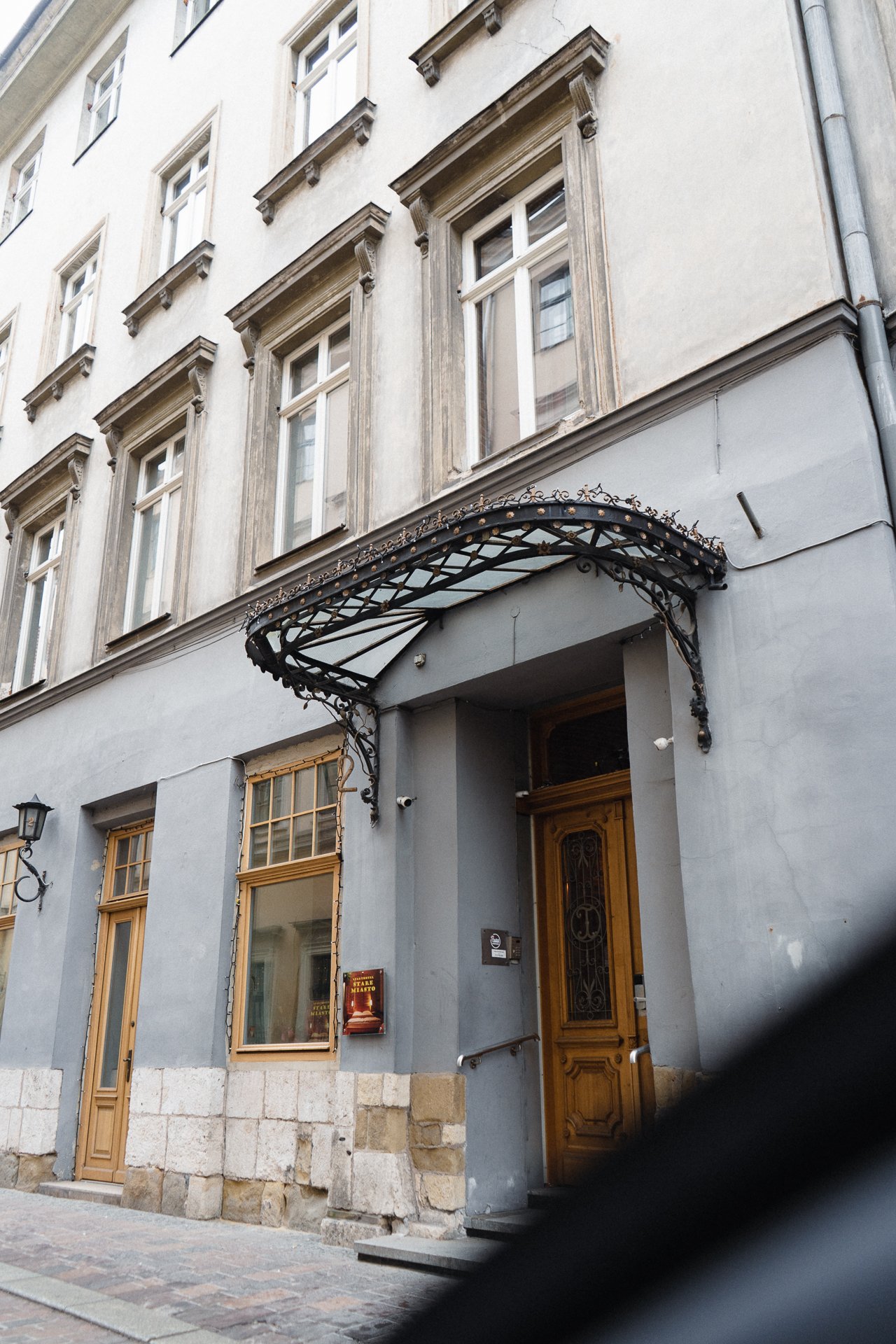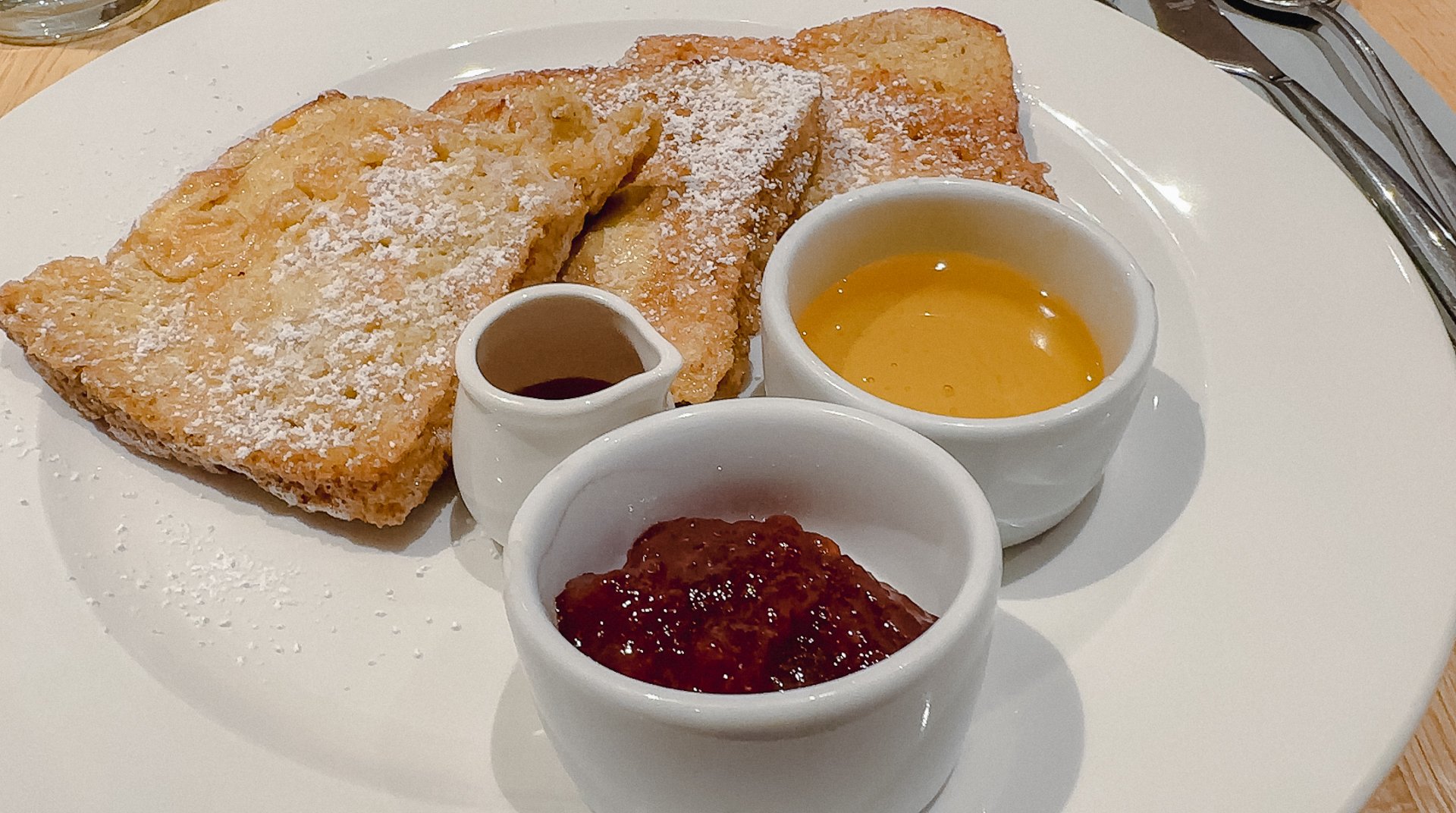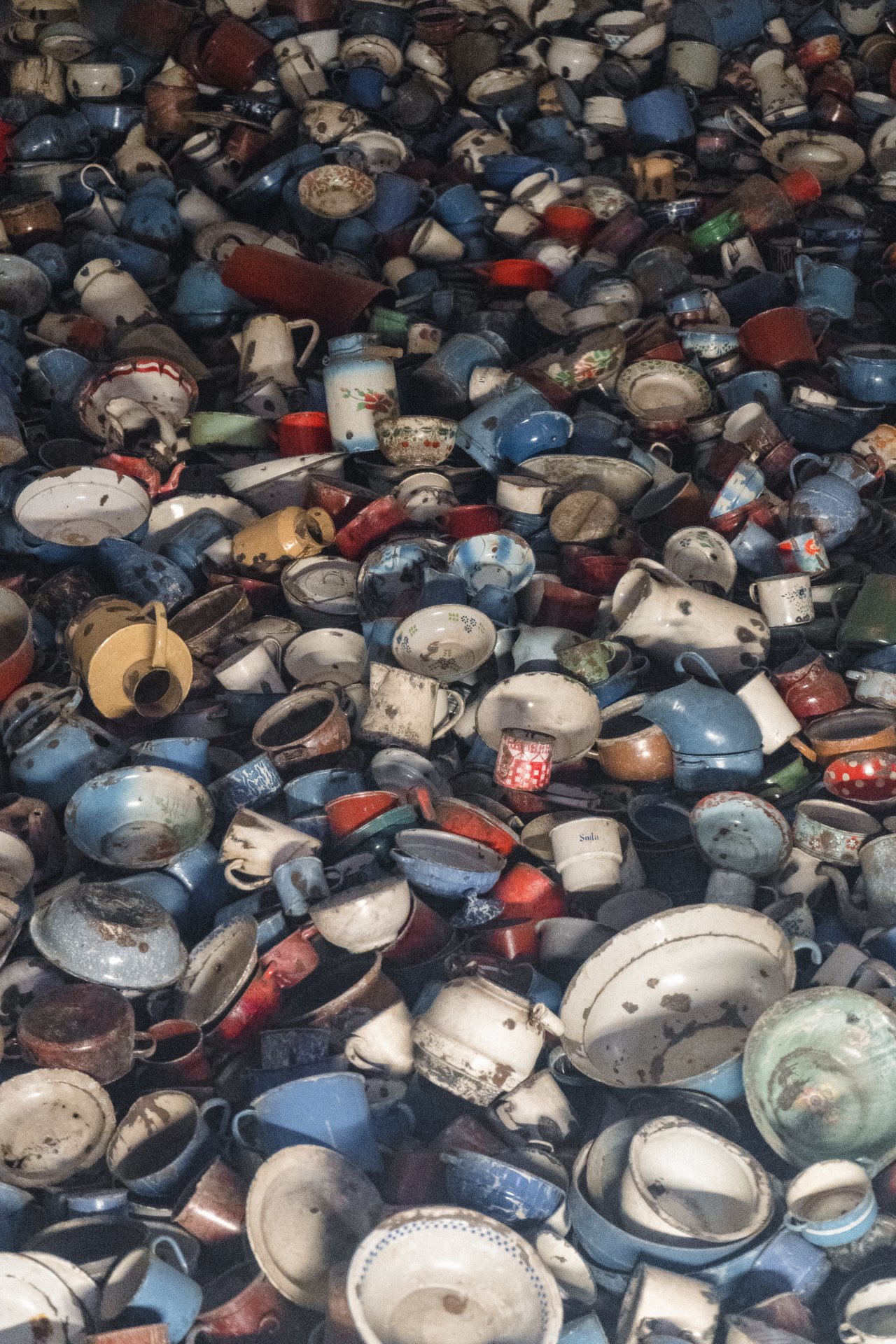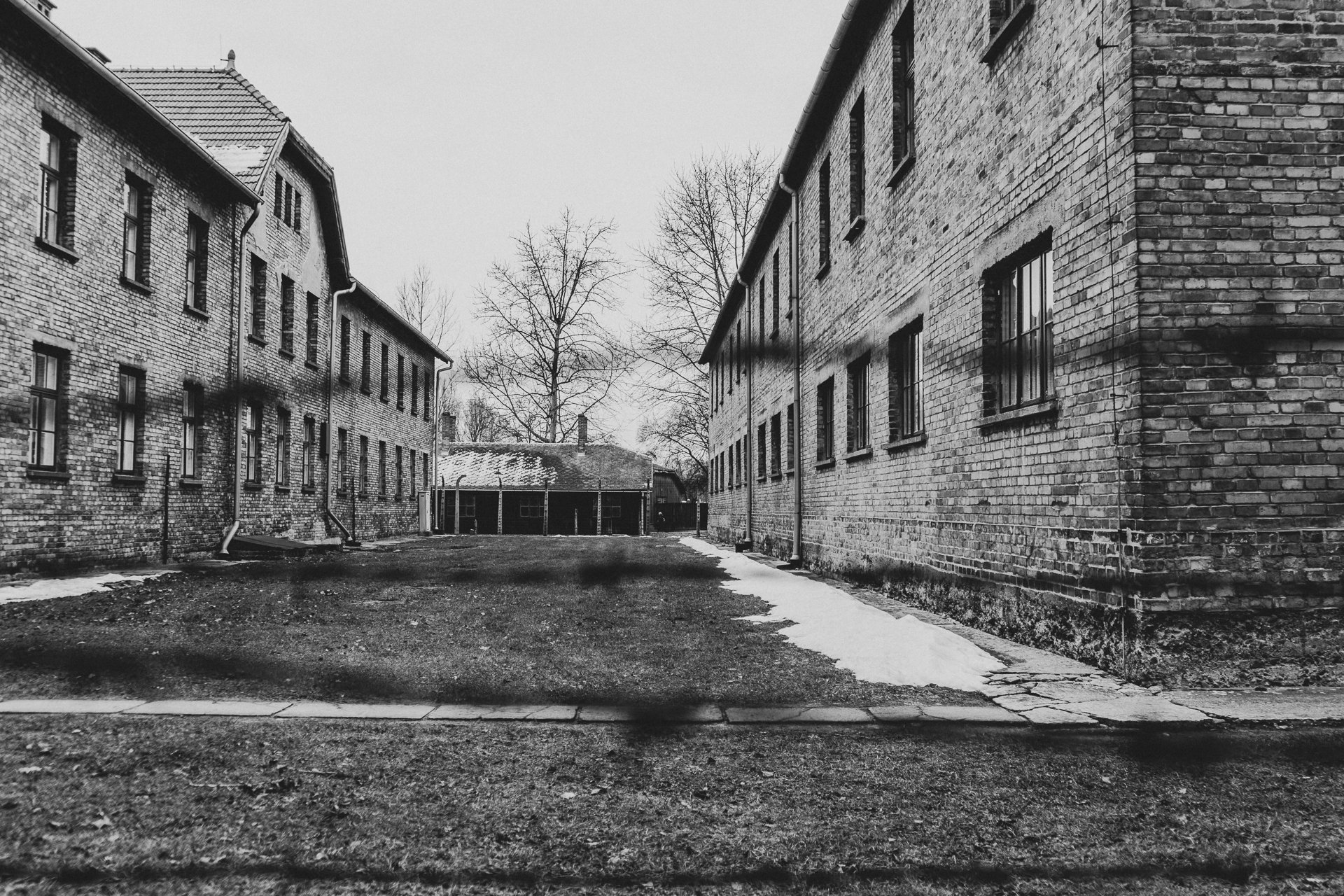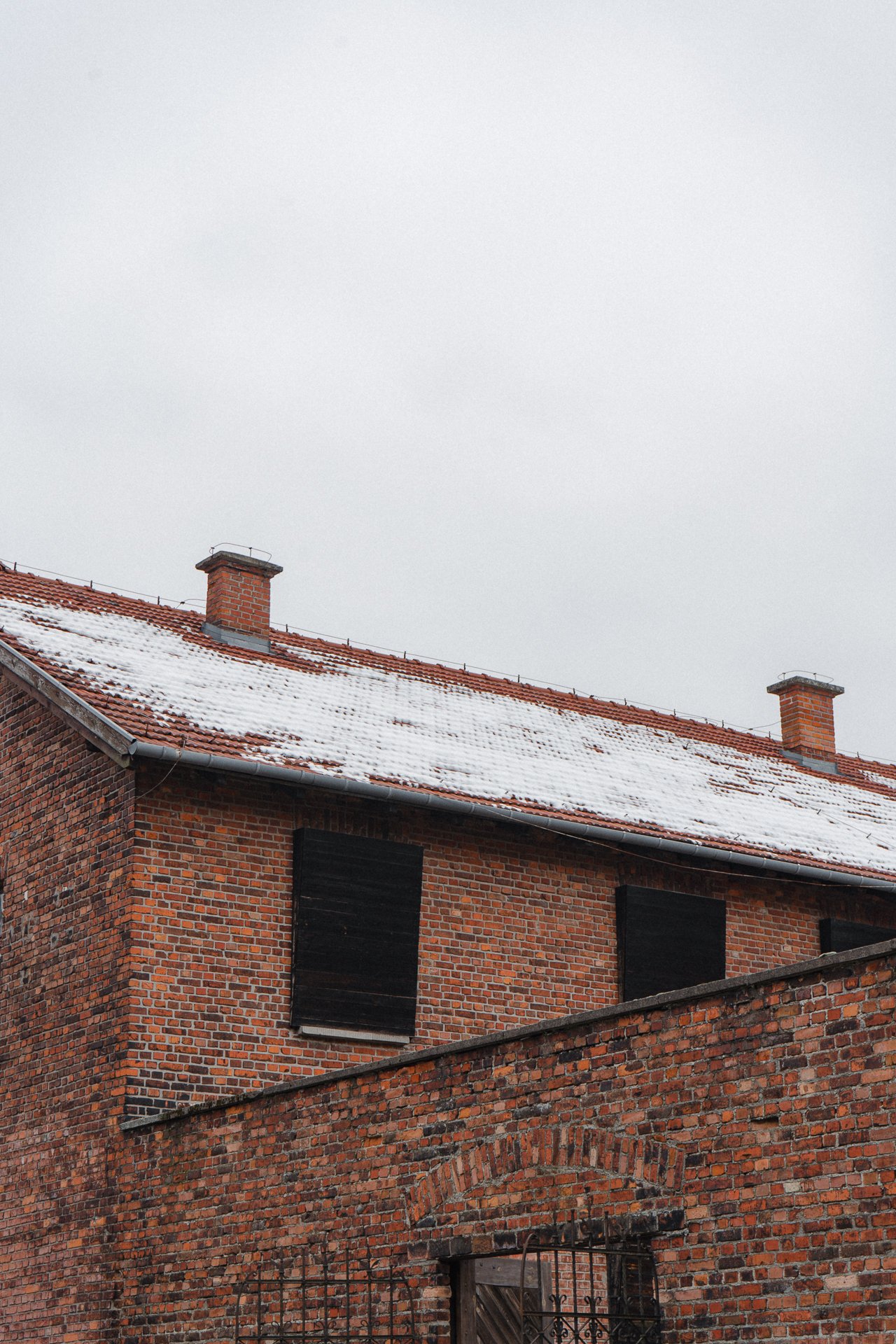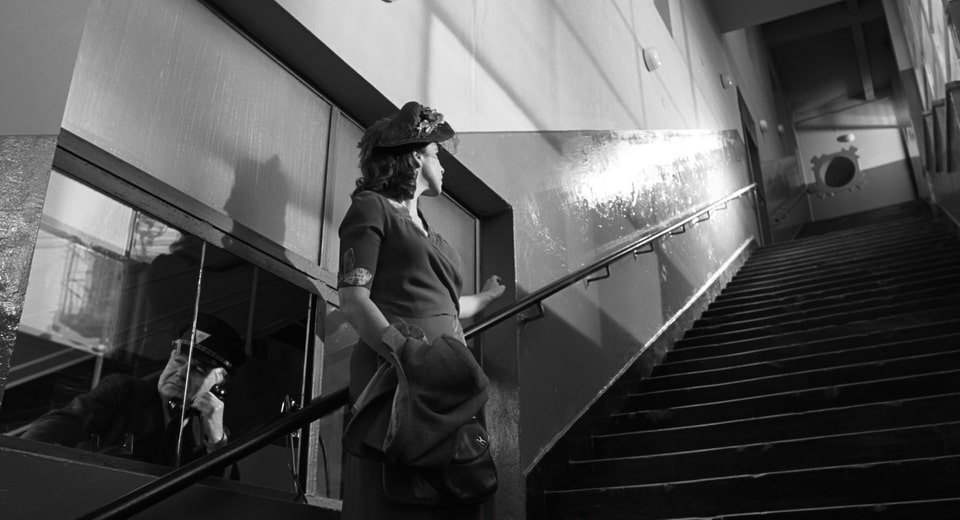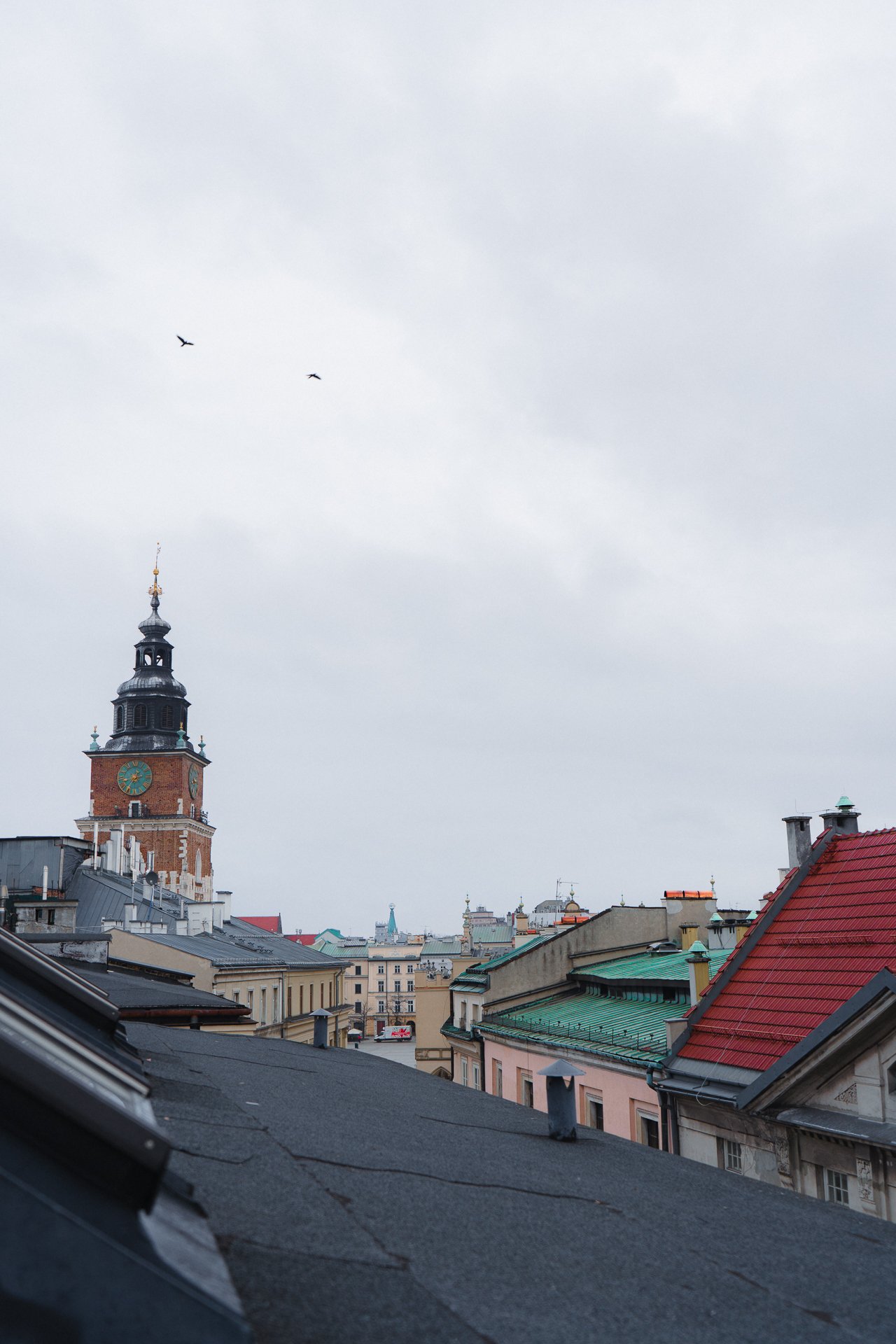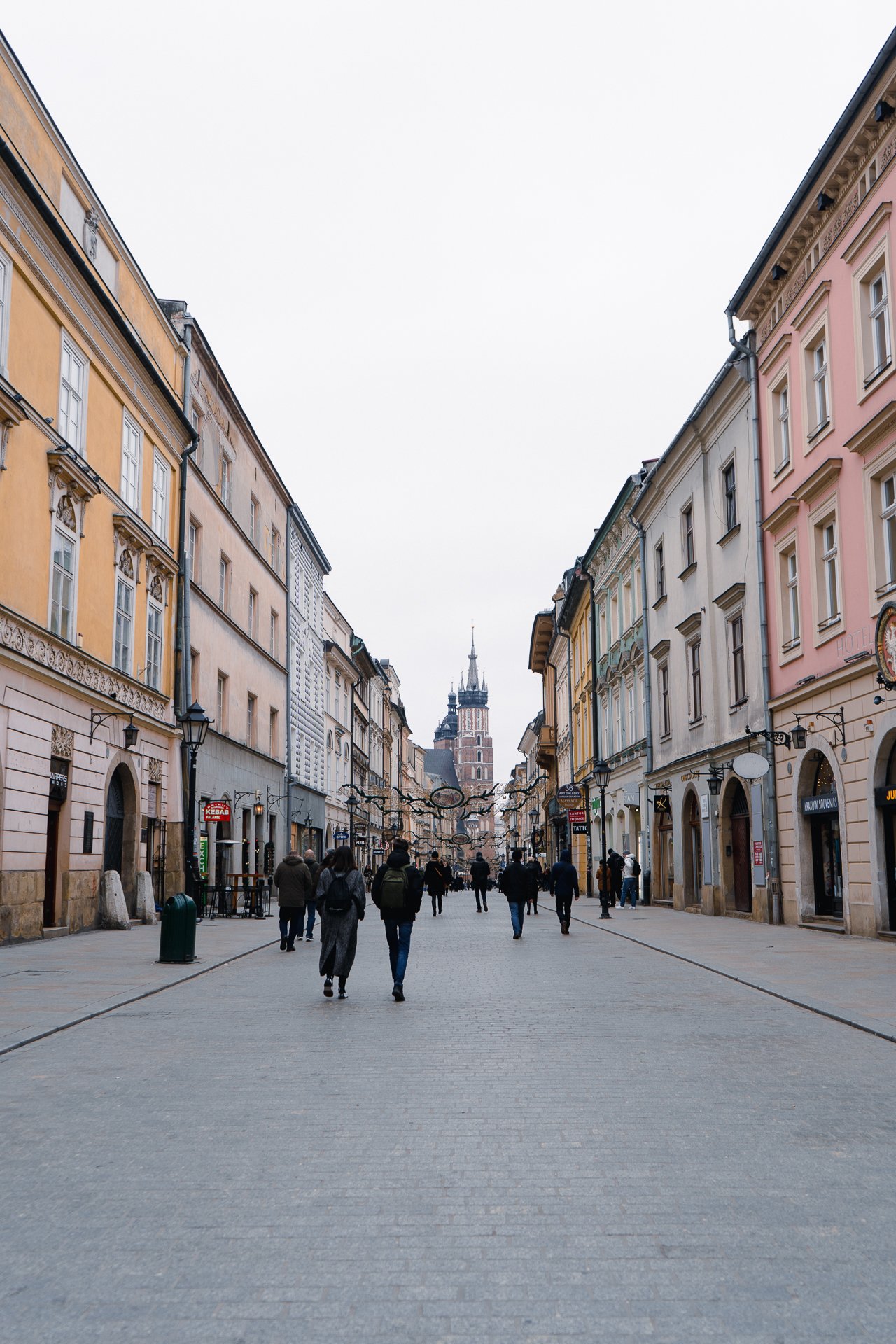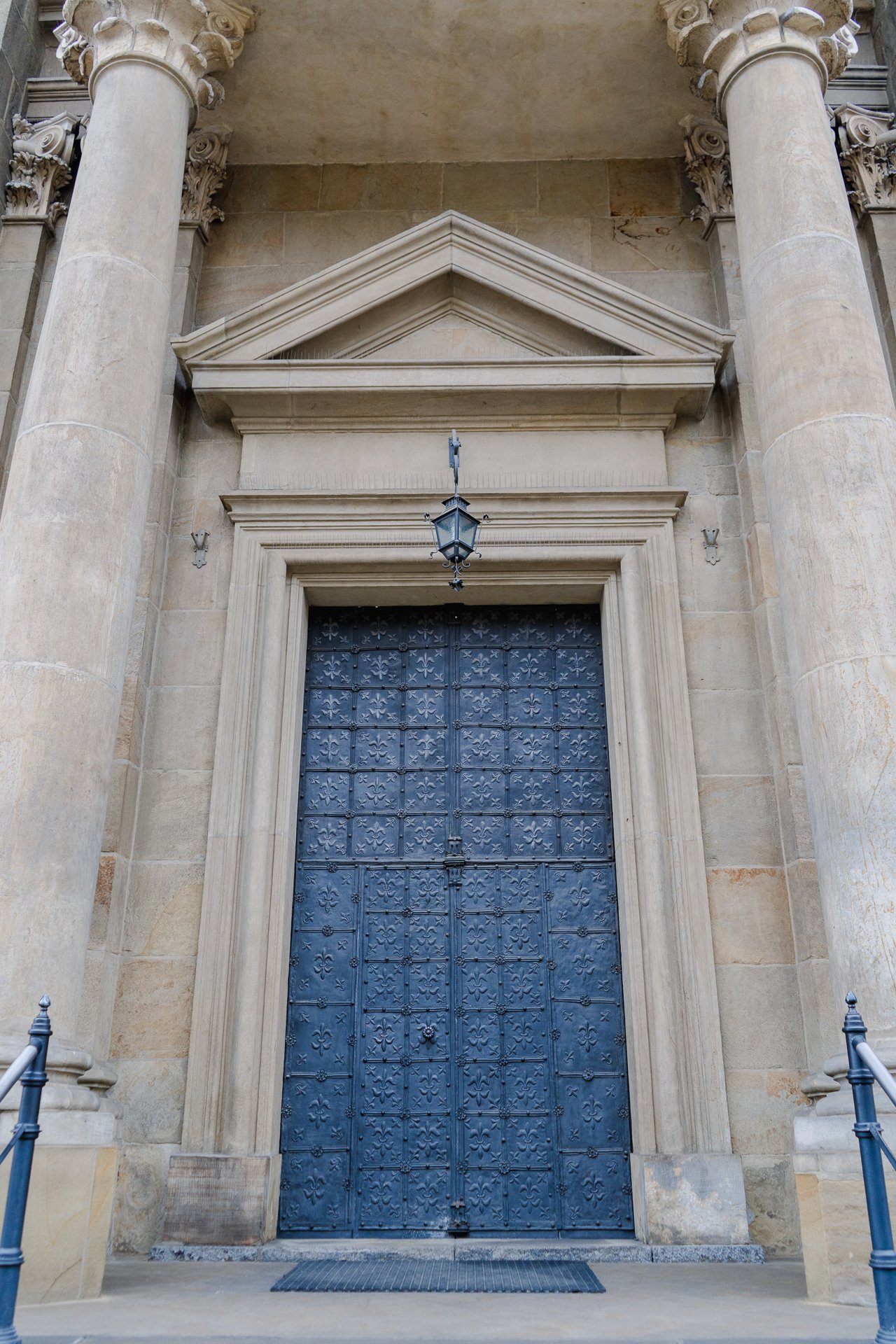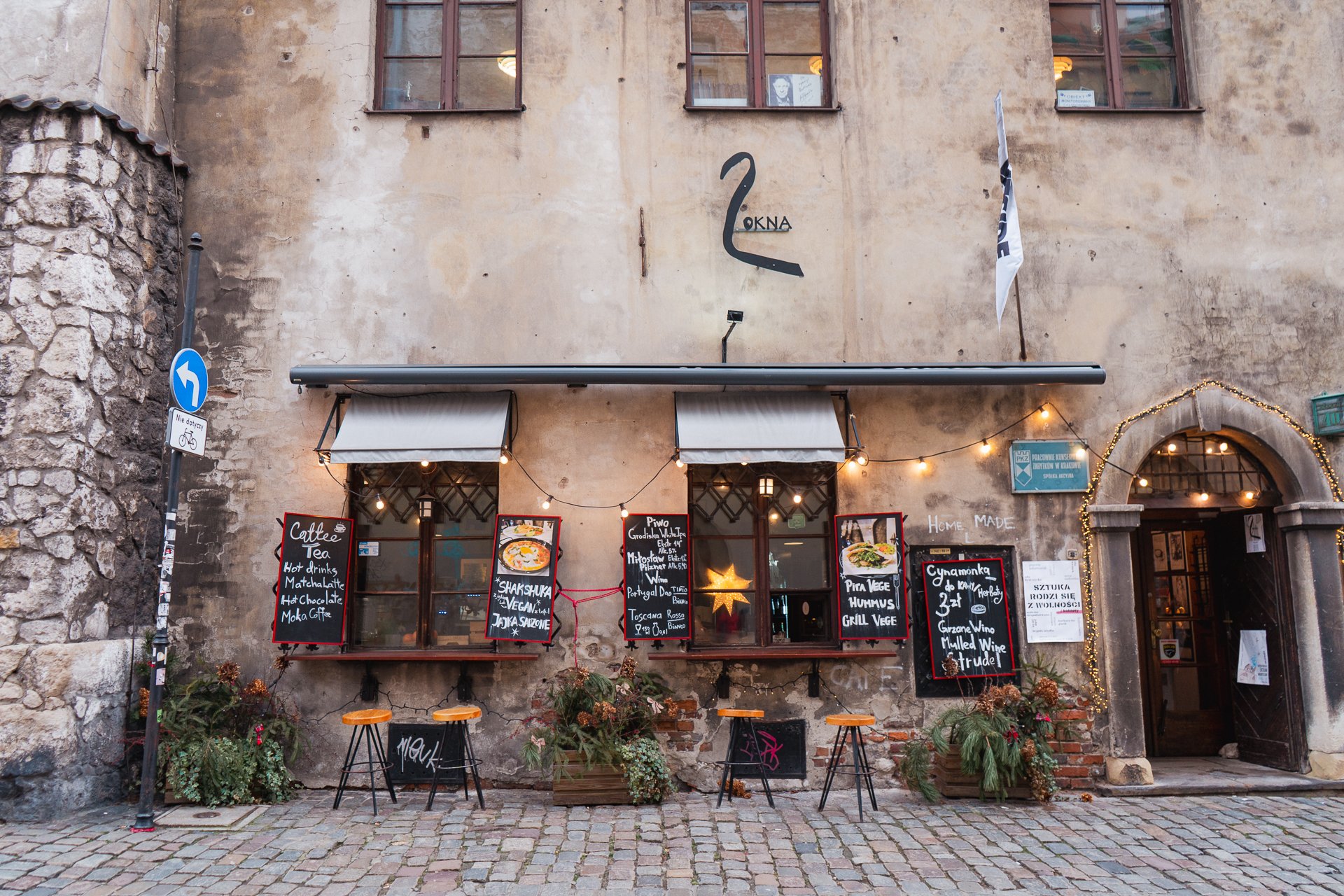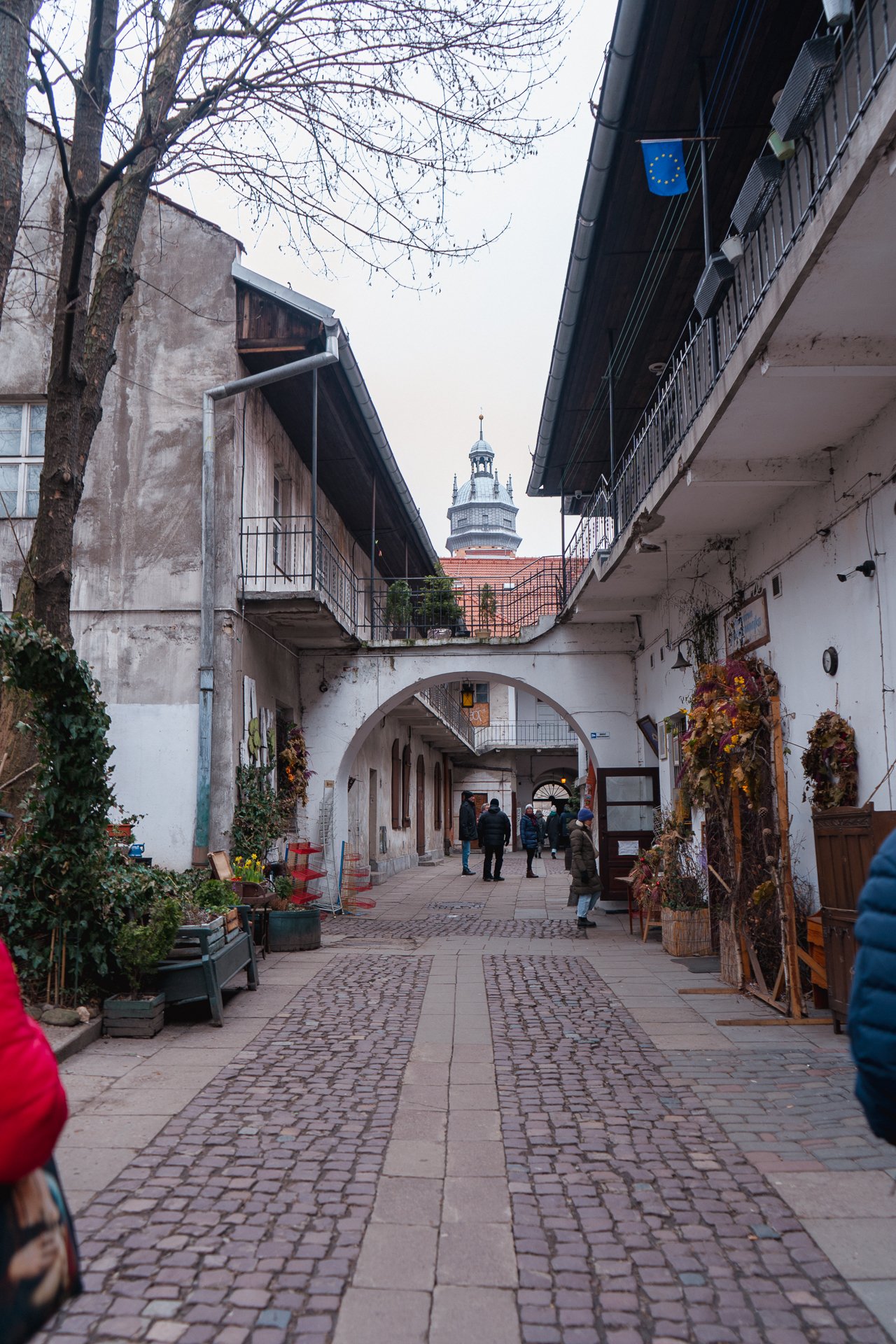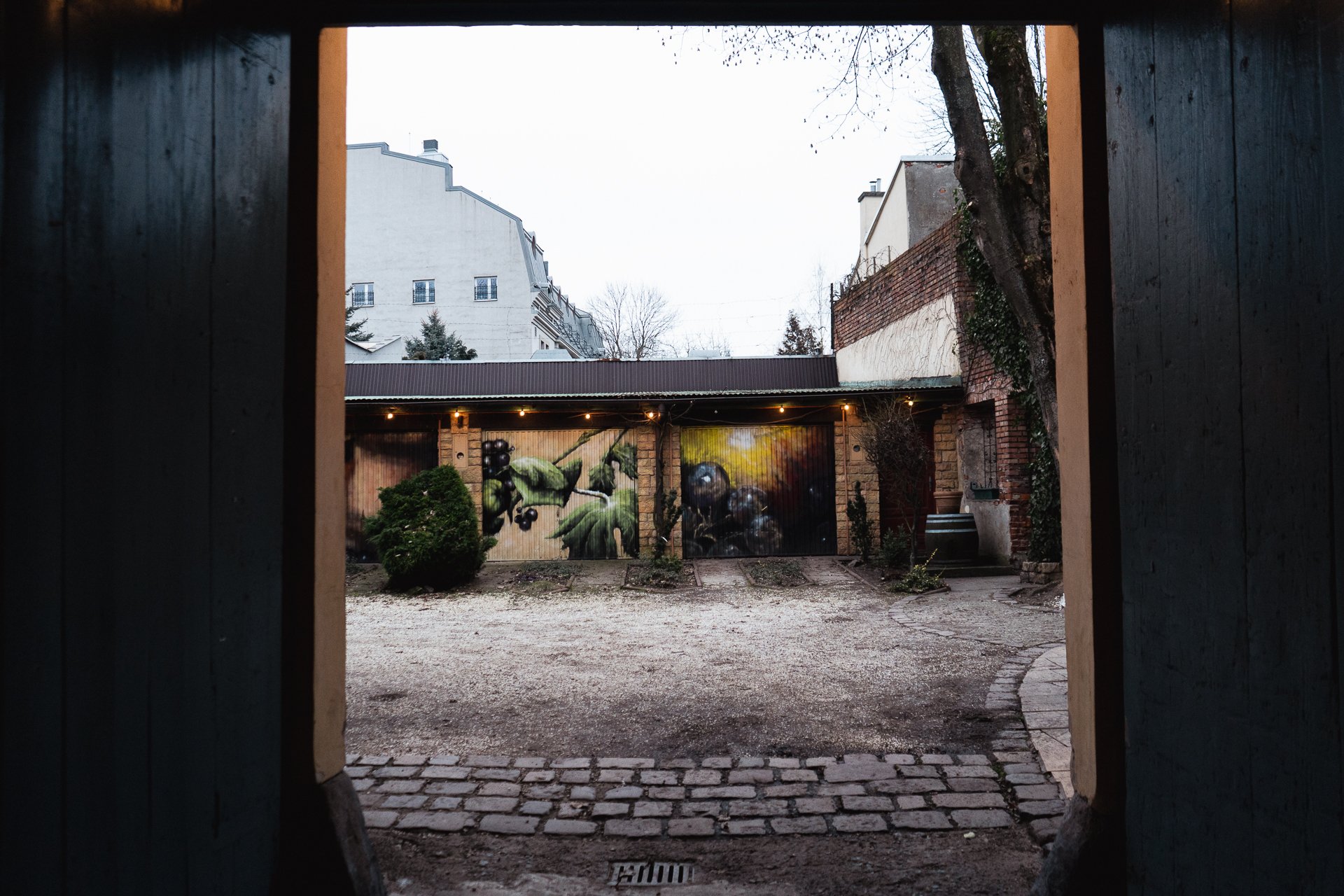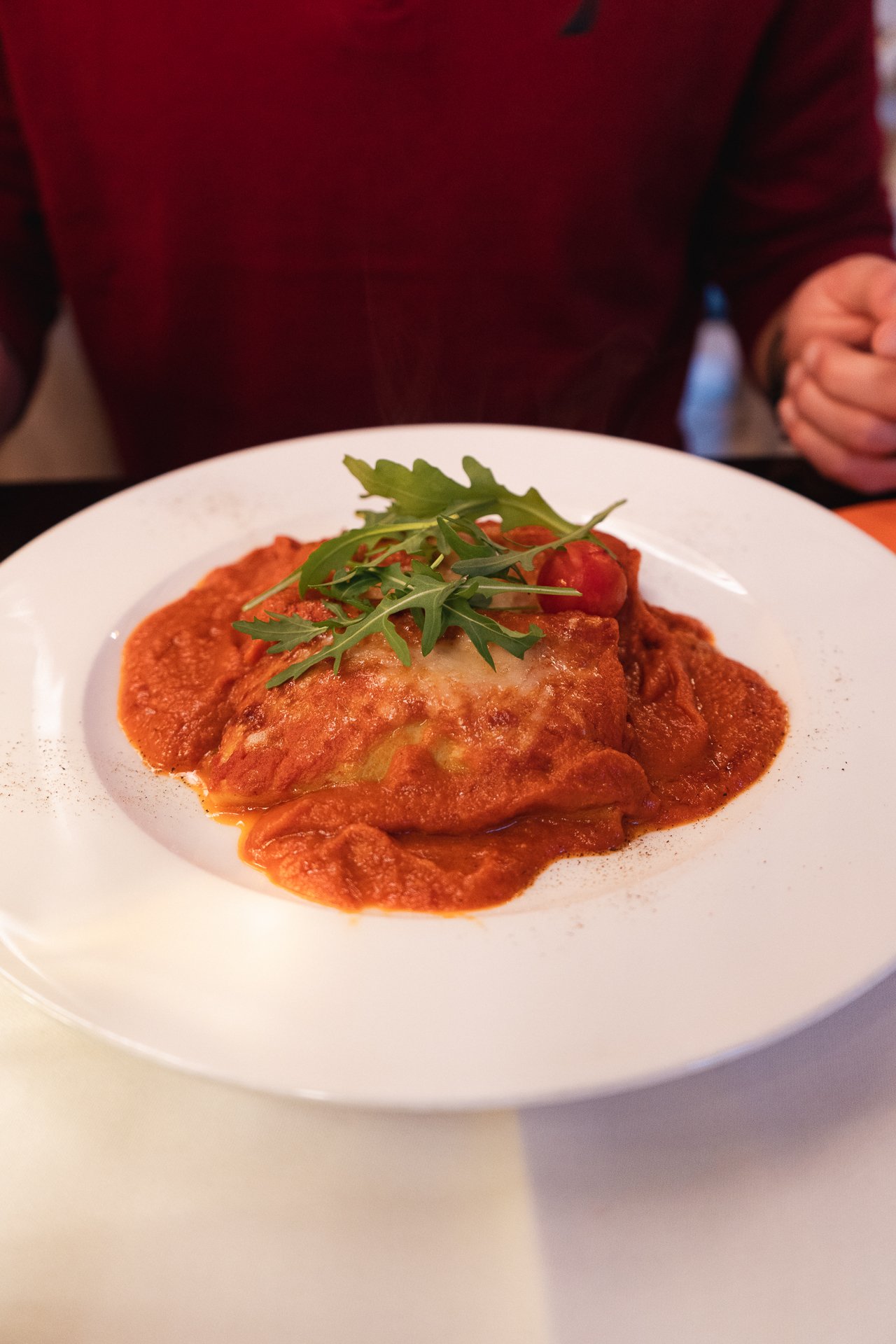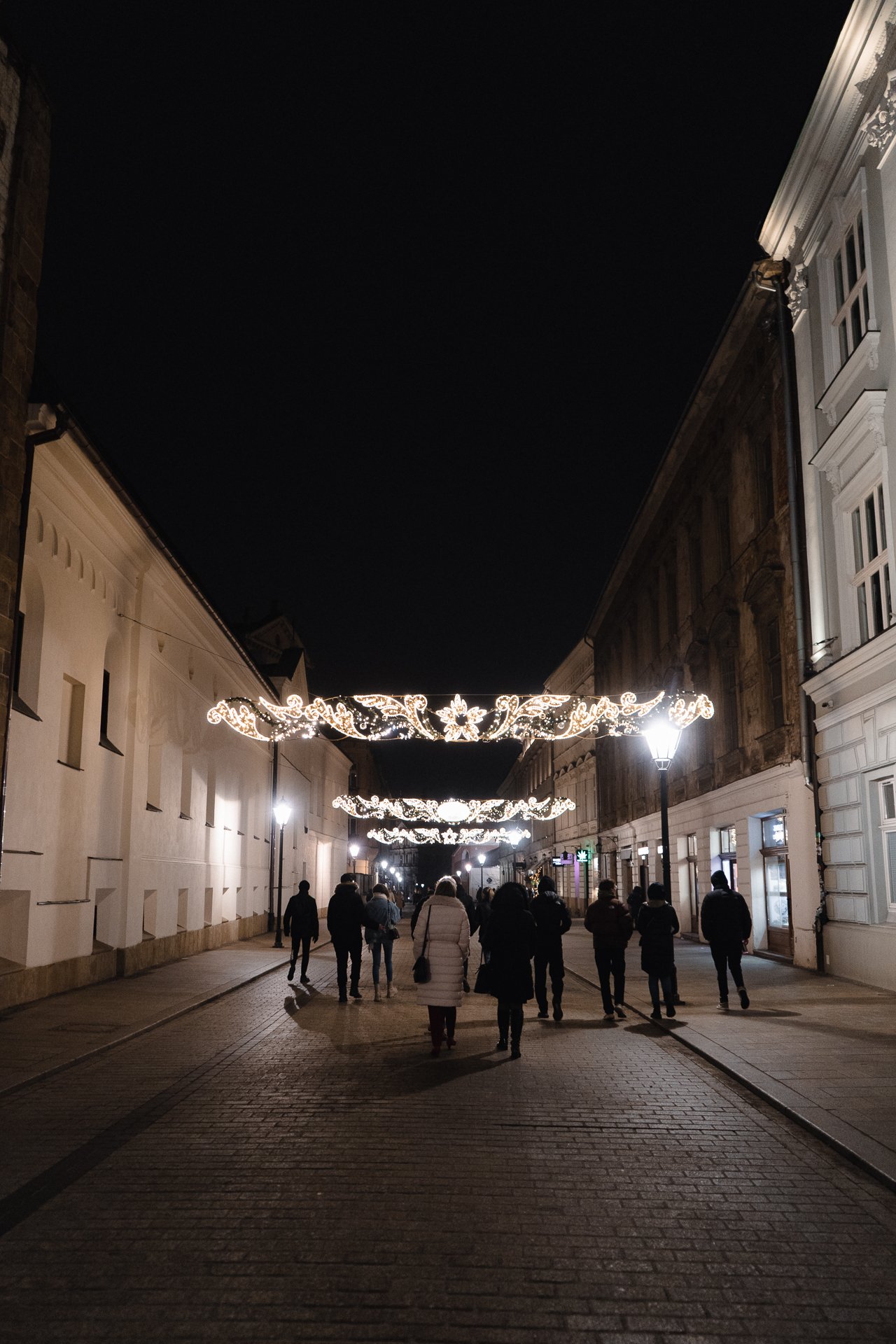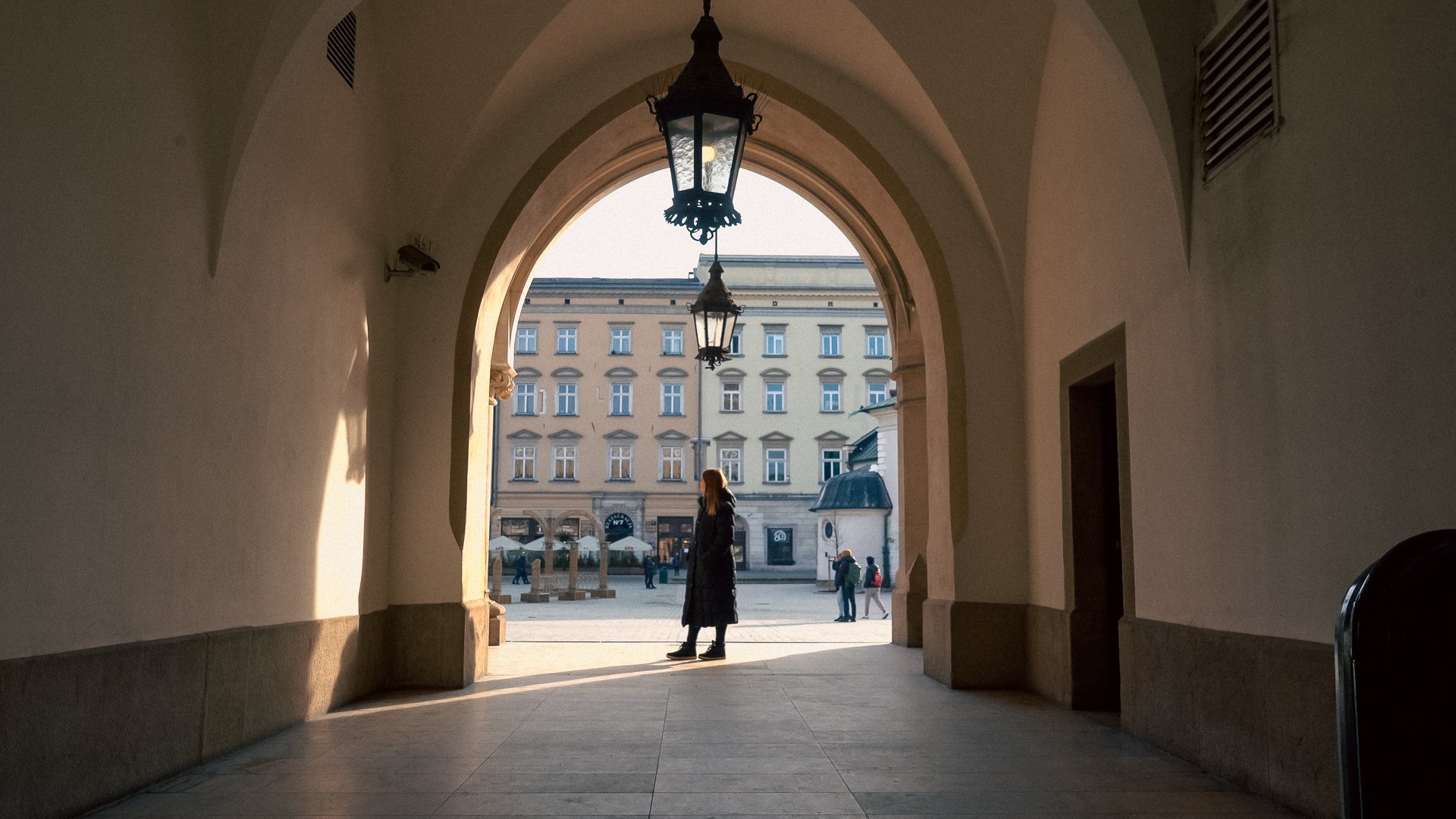Week 118: 3 days in Kraków, Poland
We ended week 118 seven hours northeast of Gmunden in Kraków. Poland’s second city. Home to a fairytale castle featuring its very own dragon dungeon, one of Europe’s oldest universities, and a picture-perfect Old Town claiming Europe’s largest main square.
Thursday, January 26
We drove seven hours to Poland on Thursday night and pulled up to Aparthotel Stare Miasto, by 10:30 PM. 400 feet from the main square and 2,950 feet from the Wawel Castle, this hotel which is more of an apartment building stood in the perfect location for our time in Kraków.
Aparthotel Stare Miasto entrance
Friday, January 27
Before we knew what this city had to offer, we were drawn to Kraków because it is just 50 minutes down the road from the town where one of the greatest tragedies in human history took place–Auschwitz. While summer is the peak season to visit Poland, we chose to visit in January because it coincided with the 78th anniversary of its liberation day of Auschwitz.
From standing in Anne Frank’s family hiding space in Amsterdam to walking the D-Day beaches in Normandy, living abroad has enabled us to see so many historical places. Adding Auschwitz to our historical sites visited list was a bit surreal.
Auschwitz was the largest and deadliest extermination camp where 1.1 million+ people were tortured and murdered during World War II and the Holocaust.
From 1940-1945, 1.3 million people were forced into these camps.
Today, hundreds of thousands of people choose to come back every year so we never forget the horrendous crimes and terror humans endured.
8:00 AM
We woke to the muffled music of the St Mary’s Trumpet playing from across the Main Square. Over the next few days, we learned this traditional, five-note bugle call is played on the hour, every hour.
8:30 AM
We quickly grabbed breakfast at the cafe next to our hotel before hitting the road to Auschwitz.
French toast for breakfast at the Hotel Cafe
10:15 AM
We arrived at Auschwitz or “Oświęcim” in Polish. Due to the high volume of people who visit the sites each year, I had pre-booked our entry tickets a few months prior to our trip to avoid any problems with ticket availability later on.
Book your tickets at the official website here
They offer general tours for 3.5 hours and one-day study tours for 6 hours (usually reserved for schools or organized groups). Alternatively, you can tour the grounds on your own, but those tickets are not available until the afternoon so even if you are on your own, by the time you are able to enter you only have 3ish hours before the grounds close and you have to leave.
We chose the guided 3.5-hour tour. It felt pretty fast-paced at times. There were a few times at the second camp when I was running to try to catch up with the group because I was hanging back to take photos. Eric didn’t get to read every single sign as he prefers, so he also felt the 3.5 hours just was not enough to fully feel the impact of this site.
10:35 AM
We began our guided tour around the main Auschwitz I Concentration Camp. Our tour started at 10:30 AM, but we were 5 minutes late so we missed a few minutes of the intro (totally my fault–oops!). Luckily we found our group and met up with our guide at the entrance gate.
"Work makes you free" is what dangles from the infamous entrance gate to Auschwitz I.
The entrance gate to Auschwitz I
Our first stop was at Block 15. We did not get to go inside, but block 15 tells the stories of 450,000 Polish citizens who became victims of the camp.
Standing outside Block 15
Block 4 was a difficult one to walk through.
Walking into Block 4
Block 4 contained an urn with a collection of human ashes between 1940-1945, empty Zyklon B cans used for the gas chambers, and a room where hair was cut from women before entering the gas chambers, which we were not allowed to photograph.
The urn of human ashes inside Block 4
Block 5 also known as “The Evidence of Crimes” did not get much easier as it housed windowed displays of 3,800 suitcases, 88+ pounds of eyeglasses, 12,000+ pots and pans, and 110,000 shoes that belonged to people deported to Auschwitz for extermination.
Block 5
The shoes
The suitcases
The pots and pans
Along the halls of block 6 hung photographs of some of the registered prisoners.
Prisoner Portraits
A bathroom in one of the blocks.
Barbed wire fencing and guard posts outlined the entire camp which made escaping the camp nearly impossible. Over the 5 years the camp was in operation, 928 prisoners attempted to escape. 196 were successful.
Barbed wire alley
Barbed wire around the buildings
Inside Block 11 is the “starvation cell”. A place where after each escape attempt, ten other camp inmates were selected and imprisoned without water and food until they starved or died of thirst. So of the 928 victims who tried to escape, 9280 victims were punished for those attempts.
Our guide shared a story about rats inside the building. While the thought of rats crawling around you gave me the Heebie-jeebies, she said the prisoners found it comforting because the rats provided warmth on the cold floor.
Block 11 info sign
‘In 1941, the camp authorities punished prisoners by starvation to death. They applied this penalty after escapes. During roll call, they selected hostages from the escapee’s block or labor detail. They took the hostages to dark cells in block 11 and held them there, without food, until the escapee was caught.
On the side of Block 11 is the wall for execution. SS men shot several thousand people there—mostly Polish political prisoners and, above all, members of suspected resistance groups.
The execution yard and death wall next to Block 11
Our last stop at Auschwitz I was at the first gas chamber and crematorium.
From August 1940 until 1943, three furnaces were used for burning bodies. Once the gas chambers in Birkenau went into operation, the camp authorities transferred the mass killing operation there and gradually phased out the first gas chamber in the main camp.
Eric inside the gas chamber at the main camp
The Block 11 building
After 1.5 hours, we took a shuttle bus (the shuttle is included in the guided tour free) from the main camp to Auschwitz-Birkenau, the second and largest camp. Victims would arrive at Auschwitz-Birkenau by train and these are the train tracks leading into the camp.
The infamous train tracks to Auschwitz-Berkenau
This part of the concentration camp was used for housing the prisoners and killing them. After arriving, prisoners would be examined by SS doctors and immediately classified as “able to work” or "selected" and killed immediately.
100 prisoners would be crammed inside each train car without any air.
A prisoner train car
Eric in front of a prisoner train car
As I stood on the train tracks for a photo, my face felt weird. Largely because it was freezing and I could no longer feel my cheeks, but also because something so terrible happened in this place and I felt really awkward smiling here.
Standing on the train tracks to Auschwitz-Berkenau
Barracks
The barracks where victims slept were originally planned as horse stables.
The barn for housing and sanitary facilities.
Rows of bunk beds placed side-by-side stuffed inside each building. These beds often broke, smashing the bunkmate below.
Rows of bunkbeds
The shared bathroom
18 survivors came back to the camp in honor of the 78th anniversary of liberation day. Jumbo screens were placed on site showing the filming of the memorial celebration.
Survivors in attendance for the 78th liberation event
A pond where human ashes were dumped
The gas chambers were destroyed in an attempt to cover up SS crimes before the camp was liberated, so all that remains are piles of bricks, collapsed stone, and metal wires.
Remains of gas chamber 2 at Auschwitz-Birkenau.
Visiting Auschwitz
Opening hours
Depends on the season and your tour selection. Check times here.Admission
Visit without a guide: free of charge
3.5 hours Guided tour: 75 Złoty (approx. €17)
One-day study tour: 115 Złoty (approx. €26)Address:
The visit starts at the former Auschwitz I site.
After our Auschwitz tour ended, we raced the clock to get back to Krakow for our tour of Oskar Schindler’s Enamel Factory. The Holocaust has inspired countless films and books, one film being Steven Spielberg’s “Schindler’s List” which was filmed in Krakow and tells the story of Oskar Schindler and how his factory saved countless Jewish lives.
Eric listening to the guide at the Oskar Schindler Factory
It should be known that even though the tour is called the “Schindler Factory tour” the former enamel factory is not actually there anymore.
For 90 minutes, we walked through the administration building where his office was and learned about the 1,100 Jews who were saved thanks to the efforts of Oskar Schindler while also gaining insight into Krakow under Nazi occupation.
Swastika banners hanging inside the Oskar Schindler Factory
Swastika flooring at the Oskar Schindler Factory
We saw a couple of scenes from the movie, like the staircase and his office.
Oskar Schindler’s desk
Products made from the factory
Visiting the Oskar Schindler Factory
Opening hours
Monday 10:00 - 14:00
The First Tuesday of the month closed
Tuesday - Sunday 10:00 - 18:00Admission
Free unless you book a guided tourAddress:
ul. Lipowa 4, 30-702 Krakowtel
After a day of sobering tours, we were looking forward to our first Polish dinner.
We grabbed a table upstairs at the charming restaurant 6 minutes from our hotel, Morskie Oko. A restaurant serving traditional Polish cuisine among exposed brick, chunky wooden furniture, and candlelight.
Dinner at Morskie Oko
We ordered a potato pancake, a mushroom soup bread bowl, and a plate of Pierogi. Pierogi is undoubtedly Poland's most famous and simple comfort food, and quite similar to an Asian potsticker.
Not pictured below is the potato pancake. When our waitress came around to ask how the food was, Eric and I said “This is so good” in perfect unison without planning on it.
Mushroom soup bread bowl
Pierogi
We briefly walked around the town square to take in the night life before turning down the street back to our hotel.
The main square at night
If I didn’t know any better, I would think it was still Christmas market season. Krakow’s Christmas tree and lights were still in full effect with bedazzled horse-drawn carriages lining up along the street and people singing in the square while a few flurries were falling from the sky.
St Mary’s Basilica and the Christmas tree lit up at night
A walk through “the Cloth Hall” was inevitable. It is in the middle of the main square and the easiest way across the square is through the Cloth Hall. There are numerous wooden stalls selling handmade souvenirs, jewelry, and crafts. The exterior features cafes and restaurants while the upper part is home to the National Museum boasting some of the most important 19th-century Polish paintings and sculptures.
Walking through The Cloth Hall at night
Saturday, January 28
This was our first full day in the city and our first time seeing it in the daylight. Keeping with the traditional European charm of pastel-colored buildings, Kraków is no exception. Our hotel rooftop window gave some of the best views of the red terracotta rooftops and church spires in the square.
Our hotel views of the bell tower in the main square
Our hotel views of St Mary basilica’s spires
8:45 AM
We walked 8 minutes from our hotel down the cobblestone streets, past Polish cellar bars, and into a Polish milk bar.
Food once served as the only option during the war is now the only option tourists are seeking out. During the communist regime in Poland, many restaurants were shut down by the government, so milk bars were opened serving mainly dairy products at low prices. Today, milk bars are famous for their unique cafeteria/diner atmosphere and for serving traditional Polish food at very low prices.
Milkbar Tomasza is a town and tourist favorite. With 3500+ positive reviews on Google, we had a hunch it would be good and we can confirm it was amazing. I will be contributing to those google reviews shortly.
Savory pancakes from Milkbar Tomasza
The blue and green walls with black and white checkered floors make Milkbar Tomasza a nostalgic place to enjoy a lovely breakfast.
Visiting Milkbar Tomasza
Address:
Milkbar Tomasza, Świętego Tomasza 24, 33-332 Kraków, PolandHours:
Tuesday-Saturday: 8-8
Sunday: 9-8
Monday: ClosedRecommendation:
Savory Pancakes with spinach & garlic dressing topped with gouda cheesePlanning tip:
There are only 10 tables inside, so be prepared to wait if you’re not there within the first hour of opening.
10:00 AM
We met up with our private tour guide courtesy of the Kraków City and Małopolska Tourism Organisation. For the next 4 hours, our guide introduced us to her city of architecture, art museums, the old town, the castle, and the Jewish quarter.
We started our tour in front of St Florian’s Gate, a focal point north of Kraków's Old Town. The gate is the main entryway to the city and the beginning of Kraków's Royal Road.
To walk the streets of Kraków is to follow the footsteps of kings, princes, popes, parades, and coronation processions. From St. Florians Gate, the royal road leads through the old town up to Wawel Hill where the old royal residence is located.
The view from St. Florian's Gate
After learning about the historical and political significance of the gate, we entered the oldest and most famous artistic coffee house in Kraków, Jama Michalika, a coffee house shrouded in dark, gothic decor accented by green and gold fabrics, stained glass windows, and art.
Jama Michalika Coffee House
Jama Michalika art
For over a hundred years, this cafe has been a hot spot attracting people with its curious art and interior design.
Jama Michalika puppets
The backroom at Jama Michalika
Enroute to the art museum
11:00 AM
Continuing down with the artsy side of Kraków, we stepped out of the cold and into The Princes Czartoryski Museum.
The atrium of the Princes Czartoryski Museum
From modern paintings and prehistoric sculptures to medieval military swords and ornate tapestries, over 300,000 pieces are displayed across 26 exhibition halls spanning the two floors of the newly renovated Princes Czartoryski Museum.
Doors to the Princes Czartoryski Museum
Staircase inside the Princes Czartoryski Museum
While the majority of the collection is Polish art, the museum claims to contain the most valuable collection in Poland and one of the most valuable ones in Europe – “The Lady with an Ermine” by Leonardo da Vinci or the “Landscape with the Good Samaritan” by Rembrandt.
The Temple of the Sibyl in Puławy, Poland.
The Madonna
The Lady with an Ermine
A painting inside the Princes Czartoryski Museum
Sketches and historic documents inside the Princes Czartoryski Museum
Visiting The Princes Czartoryski Museum
Address
Ul. Pijarska 15, 31-015 KrakówHours
Monday closed
Tuesday-Sunday: 10.00-18.00Admission
Free admission on Tuesdays
12:30 PM
After 90 minutes inside the art museum, we continued down the royal road and ventured over to the University of Krakow. A public research university founded in 1364 making it the oldest university in Poland and the 13th oldest university in continuous operation in the world. It is regarded as Poland's most prestigious academic institution.
Heading towards the University
The University
Cobblestone street outside the University
University courtyard
1:00 PM
Wawel Castle sits atop one of Kraków’s five mounds. Just like Rome has seven hills. Prague has a hundred spires. Krakow has “The Five Mounds”, making it a worldwide record holder.
Walking up to Wawel Castle
Plaques of major donors to the Wawel Royal Castle
Views from Wawel Castle
Wawel Castle
The castle clearly consists of different architectural types. In fact, it represents centuries of European styles. The renaissance archways, the medieval gothic buttresses, and the highly decorative baroque accents.
Wawel Castle courtyard
1:30 PM
Our tour was coming to an end as we were entering the Jewish Quarter of the Kazimierz district.
A blue tram on the way to the Jewish quarter
A blue door on the way to the Jewish quarter
Pre-WWII, 64,000 Jews lived in Kazimierz. During the war, the Jews from Kazimierz were forced to the Podgórze district. Podgórze became a ghetto that was completely closed off from other parts of the city.
Today, the Jewish quarter is thriving again. Six synagogues are still in existence and the liveliest bars and cafes are packed into the dingy streets of Kazimierz.
A restaurant in the Jewish Quarter
We stopped as we recognized the street we were standing on. It was another scene location from Schindler’s List.
A street in the Jewish Quarter
We also noticed the street was completely blocked with black bulletproof SUVs later to find out the US Vice President’s husband was also in Kraków for the 78th-anniversary event.
2:15 PM
We arrived at the Ghetto Hero Square. This square is where families were torn apart. Mass deportations to the death camps, beatings, and executions also took place here. A square once filled with horror and humiliation is now filled with iron chairs symbolizing the empty seats that the residents of the ghetto left behind.
Chairs in the Ghetto Hero Square
Adjacent to the Ghetto Hero Square is the Eagle Pharmacy Museum. One of the four pharmacies in the Podgórze district and a part of the Memory Route in Kraków.
Eric in front of the Eagle Pharmacy
During the war, the Eagle Pharmacy was the only one operating within the ghetto and it became a meeting place for Jewish intellectuals, scientists, and artists staying in the ghetto. The pharmacy staff gave medicine to the wounded free of charge. The owner, Tadeusz Pankiewicz and his assistants helped Jews inside and outside the ghetto, providing information and food.
Visiting The Eagle Pharmacy
Address
Plac Bohaterów Getta 18, 30-547 KrakóHours
Wednesday-Sunday: 10:00 - 17:00Admission
Regular Entry: 18 PLN (€3.84)
Free admission Wednesday
2:30 PM
Lunch was at Klimaty Poludnia
The entrance to the courtyard
Entering a quiet, hidden courtyard was a delight after a full afternoon strolling around the streets of Kraków. For an hour, we were tucked away from the church chimes, bugle calls, bus motors, and tram cars and enjoyed a cozy lunch in the heart of Kraków.
The courtyard
The main dining room only had a handful of seats and a collection of corkscrews adorned the wall.
Klimaty Poludnia
Mushroom soup
Gnocchi
Lasagna
4:00 PM
As we walked back toward our hotel we saw a line of people standing outside of a street window.
Dobra Paczkarnia donut shop
During the tour earlier in the day, our guide mentioned donuts being a common polish dessert. So we jumped in line and ordered two donuts.
The donut display
Eric’s caramel donut. I had the chocolate Blueberry donut.
8:00 PM
After a few hours back at the hotel, went back out to enjoy our last night in Kraków.
Night time hotel views
Night time city walk
Night time city walk
We stopped in Café Noworolski, one of the cafes along the cloth hall. It is considered one of the most famous cafes in Kraków competing with the Jama Michalika we mentioned earlier. During the Nazi occupation, the cafe was taken over and only accessible to Germans.
Eric in Café Noworolski
Sunday, January 29
We woke up early and revisited some of the popular sites from Saturday, this time avoiding all the crowds.
As we walked around, comparisons are unavoidable. We found ourselves comparing the city to others we have explored. Krakow’s architecture felt like the best of Salzburg, Prague, and Berlin. The artwork you would find in Florence by artists like Leonardo Da Vinci can also be found in Kraków’s Princes Czartoryski Museum. Street artists showcasing work like in the Montmartre district of Paris can be found along the walls of Kraków’s St Florian’s Gate. What truly stuck out for us was the food.
We knew this trip would be full of history and art, but we did not anticipate loving Kraków as much as we did. The food and the city surprised us in the best possible ways. If you are a history buff, foodie, or art enthusiast, Kraków should be added to your travel list.

